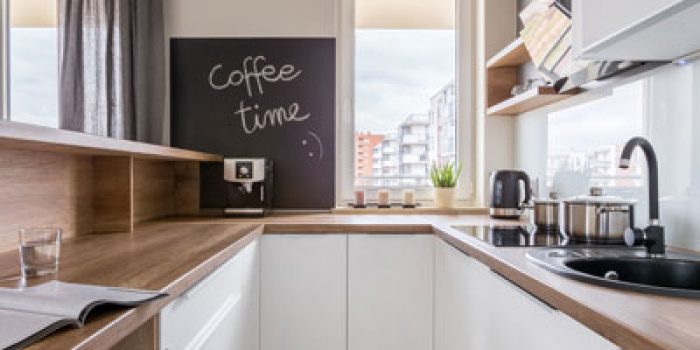Small can be beautiful and - crucially in this case - functional too. By Luke Rix-Standing.
In the modern world of cramped shoe-box flats and sardine-tin apartment blocks, space is a rare and valuable commodity.
Wave goodbye to extended worktops, double-door refrigerators, and luxurious kitchen islands – particularly in urban areas, these are now myths from a bygone age for many of us.
When space is scarce, kitchens are often the first to feel the squeeze – there’s no headline floor-filler in this room, like a sofa or bed – but there’s no need to let that cramp your cooking.
Here’s how to keep livin’ it large, even with the most modest kitchen…
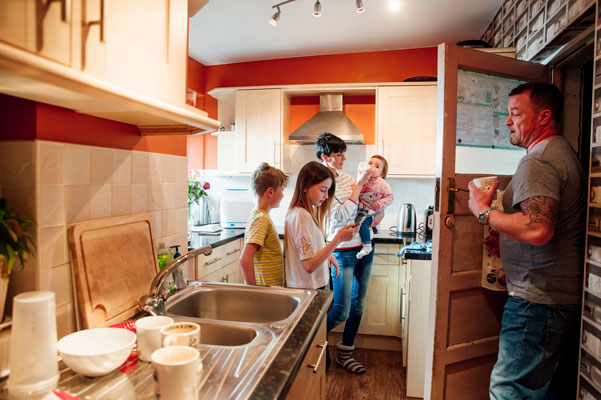
1. Purge the unnecessaries
Be totally honest with yourself – do you really need that candy floss maker, that ‘pizza oven’ that’s actually just a small oven taking up half the counter top, or that margarita maker you used once back in 2013?
“It’s the number one mistake people make,” says professional organiser, Vicky Silverthorn (youneedavicky.com). “Putting the contents of a four-bedroom house into a two-bedroom house, and keeping gadgets that come out only occasionally. The fondue set, the avocado slicer, the large dinner platters for people that don’t have dinner parties… Ask yourself what you’d prefer – the space, or the appliance you use once a year?”
2. Think vertically
Floor space is not the be all and end all, and for those blessed with high ceilings, it’s crucial to cash in. Add extra shelves above your cupboards, or use the tops of your cupboards as extra storage space.
Time and budget allowing, you could install a vertical, sliding drawer, which may single-handedly take the place of a pantry. Think of your kitchen like a maths question – you’re calculating the volume, not just the floor area.
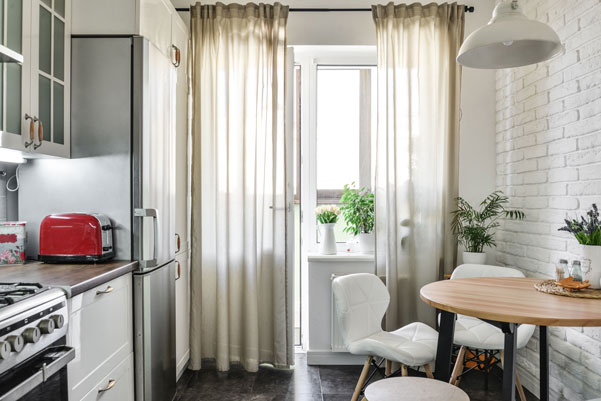
3. Use your corners
Corners are notoriously difficult to utilise, but unless you’re living in a water tower, every room has at least three or four of them. Wraparound corner shelves are shoo-ins for storage-starved kitchens, while floor lights and tables can be slotted in with ease. In most rooms, corners are dead space; in a small kitchen, they’re an opportunity.
4. Store in adjacent rooms
If your home is relatively spacious, and it’s just your kitchen feeling the squeeze, you can always store non-perishables elsewhere. There’s just no need to clog your kitchen cupboards with piles of pasta and tinned beans, when they could live just as happily somewhere else in the house.
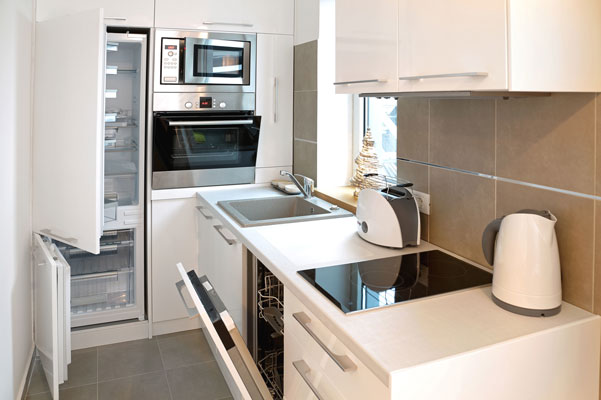
5. Keep it tidy
Kitchens are supposed to be functional, efficient spaces, tailored to minimise the inherent pressures of cooking – and to keep a clear head when things get steamy, you need a clear work surface.
“It’s about putting the items that you have in the correct spaces,” says Silverthorn, “and there is no one-size-fits-all. Look out for gimmicky plastic containers that only contain a few tins – not everything needs to live in a basket, despite what Instagram says. Get stackable storage containers, or containers that fit inside each other when they’re not being used.”
6. Clever colours
Just because your kitchen is small, doesn’t mean it has to look small. Consistent colouring helps a room feel fluid, while bright blocks of contrast colour can quickly become claustrophobic (although there are no hard and fast rules!), so consider keeping your scheme to a two-colour maximum.
Lighter colours invariably feel airier – whitewashed kitchens are increasingly common – while reflective surfaces like mirrors lend depth.
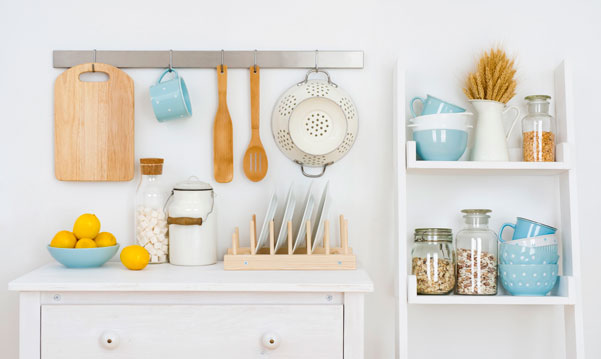
7. Tactical lighting
How large a room looks is as much about your perception as its actual size. Natural light bathes your kitchen in a vivid glow, imitating the wide open spaces of the great outdoors, while poorly-lit areas very quickly feel poky.
Artificial light is where the buck stops after-hours, and you want to mix up overhead sources with table lamps or wall lights. Accent lighting lends contrast between different parts of a room, which inevitably leaves your kitchen looking larger and more varied.
“I love lights that dim in a kitchen,” says Silverthorn. “It gives the bright, vibrant light for the morning and afternoon but can then turn cosy for when you’re winding down.”
8. Space-saving gizmos
Extravagant gadgetry generally takes up more space than it saves, but there are a few specific products that earn their place. Try a magnetic knife holder – a strip on the wall that holds knives and other metallic implements – or pick up a chopping board that sits atop your sink.
Anything that can be hung should be hung. Hooks on the undersides of shelves are a go-to for mugs, while large utensils can be well catered for with rails and racks.
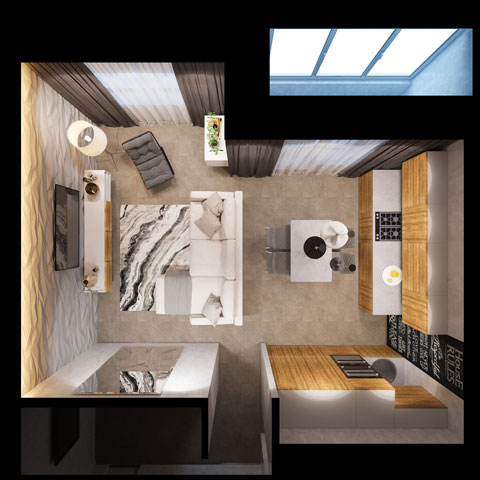
9. Double up
Going back to gadgetry, even seemingly sensible tools can often be economised, and canny buyers can squeeze two tools into the space of one. “Employ multi-purpose kitchen utensils,” says Silverthorn, “you’re automatically saving space.
“I’ve been working with Brabantia (brabantia.com/uk),” she adds, “and their new Tasty+ range is full of them. There’s a spatula that’s also a fork, a skimmer that’s also a ladle, a spaghetti spoon that’s also got a measuring tool in it. You’re instantly halving the utensils in your kitchen.”

